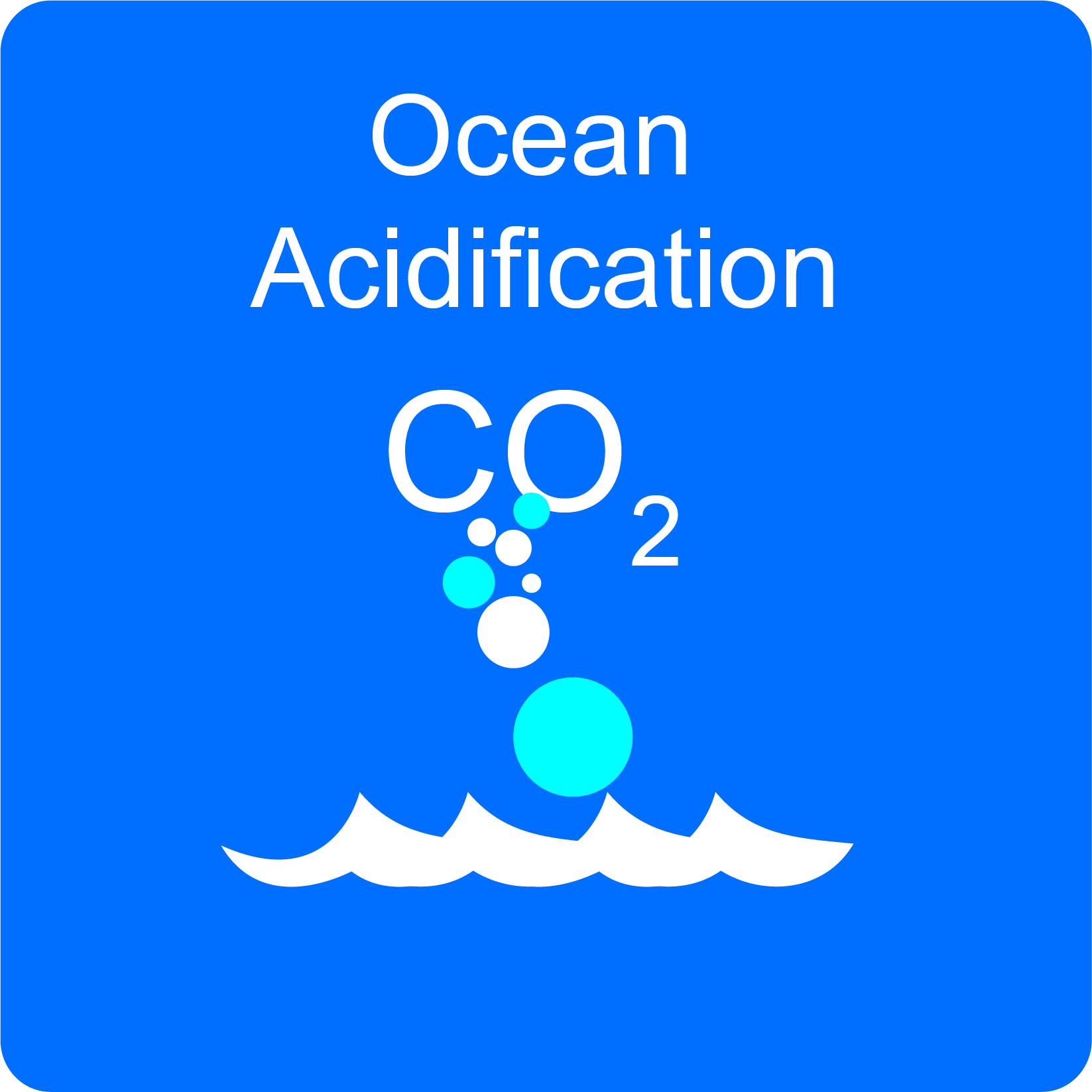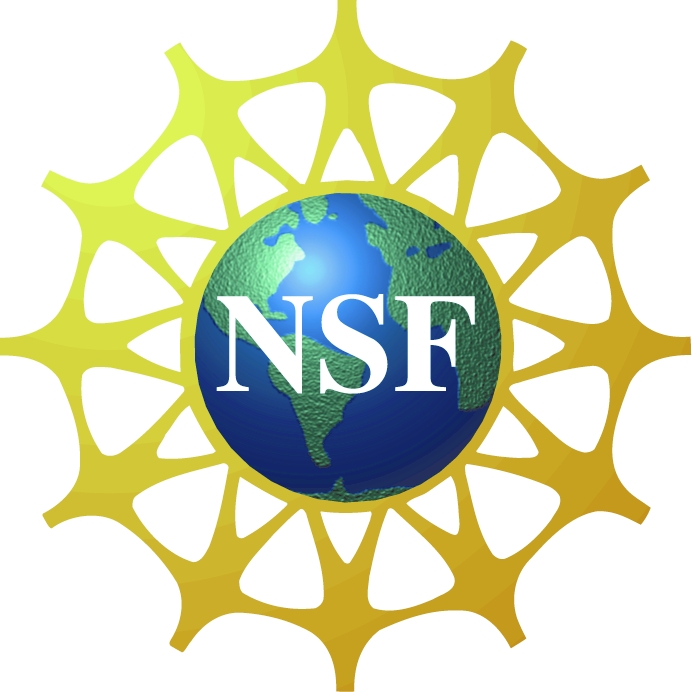Ocean Acidification: A Systems Approach to a Global Problem
Unit Plan

Course: Integrated Science, Physics, Biotechnology and/or STEM courses
Unit: Measurement, Scientific Process, and Instrumentation Design
Curriculum Summary
Students begin the module by critically assessing different news articles. As a class they combine their findings to develop a network diagram in order to identify the key players (or parts/nodes) in this system. They use this to plan their next experimental steps. Students then use inquiry to understand the effects and properties of CO2. They continue by designing a second, systems level experiment based on their interest group to further explore how a change in CO2 has impacted their subsystem. Students model collaborative research by designing and completing cohesive sets of experiments that build off others’ experiments. In addition to their own data, students use real-time Puget Sound and worldwide ocean and genetic data to predict the response to further disruptions. In the culminating activity, delegates reconvene to present and discuss their findings in reference to the impact on their ocean network. Recommendations are made for scientists, politicians and people across the world. Students reflect on unanswered questions and on what their individual roles in the networks they have studied are, and how they might change their actions in order to positively impact the network.
- A 45 minute webinar describing these lessons can be viewed through YouTube here: https://www.youtube.com/watch?v=e6a-_m0ws8Y. You can also download the webinar and the accompanying powerpoint via NOAA’s SOARCE webpage.
- Overview of Lessons for teachers via PowerPoint: To download a PowerPoint presentation, crafted for teachers, that guides educators through the module lessons, please click here (or access it from Google Drive here). Please keep in mind this presentation is for teacher use. In many cases, more information is included in the notes section of the PowerPoint file.
- Overview of Lessons for teachers via NSTA’s The Science Teacher: This article discusses using the module, with a focused description of how to help students develop systems thinking and STEM research skills. There is also an attached 3-minute video describing the article and curriculum. You can watch the video from this link.
- Overview Flowchart: Use this concept map to help direct the flow of this module. Please note, that Lesson 5c of this module was originally included within Lesson 5b. The concept map linked does not include a separate 5c designation, but can be completed by students as part of Lesson 5.
- Lesson Plans: The actual teacher Lesson Plans are located on the lesson pages that can be accessed from the menus and lists below, to the left and/or at the top of each webpage.
- Standards Addressed: This module aligns with the Next Generation Science Standards, the WA State Standards, and the NOAA Ocean Literacy Standards. Please see the Standards Addressed pages for more information on how this module connects to these published education standards. Please also see the individual lesson plan pages for additional information on what student do and learn.
- Using the 5E Instructional Model with these lessons: See this document for more information.
- If you need any more information and/or have questions, please feel free to contact us.
- Lesson 1 – A Critical and Systems Evaluation of News Articles. This lesson introduces the problem and leads to laboratory question formation. Students gain systems and critical thinking skills while exploring various environmental phenomena.
- Lesson 2 – Exploring Carbon Dioxide to Better Understand Ocean Acidification. This lab experience offers inquiry and round robin labs leading to students understanding carbon dioxide, pH, photosynthesis, combustion, respiration, general chemical reactions, and how to detect and measure changes in liquids and gases.
- Lesson 3 – Defining the Problem: Ocean Acidification. This lesson sets the stage for students to begin ocean acidification experimentation. Students gain systems thinking skills and see that this is a complex problem with many stakeholders and unknown solutions (making it an interesting research opportunity!).
- Lesson 4 – Planning Cohesive Experiments. In this lesson, students work in interest groups to collaboratively build a systems-level experimental plan that works with the classes’ goal of answering the question, “What effect does the increasing atmospheric CO2 have on the ocean and its subsystems?”
- Lesson 5 is broken up into three parts – wet bench work, online research and system modeling.
- Lesson 5A – Ocean Acidification Experimentation outlines possible experimental methods and ideas.
- Lesson 5B – Online Data and Supplemental Evidence outlines other activities and data sources that deepen the understanding of ocean acidification data, models, and research.
- Lesson 5C – Simulation models and scientific reading offers two modeling activities each paired with close reading of scientific research to deepen understanding of how ocean acidification reverberates through ocean systems.
- Lesson 6 – Global Ocean Acidification Summit. In this culminating lesson, students act as both scientists and delegates to evaluate and present their findings in order to arrive at greater understanding with a recommended plan of action.
Assessments
In addition to the embedded assessments within each lesson, we have added two formal surveys to this module.
- One is a series of NGSS-aligned mini-surveys to be completed at the end the OA module’s lessons. Each survey will take only 1-3 minutes for students to complete in class.
- Link to the mini-survey to be completed by students at the end of each lesson: https://www.surveymonkey.com/r/OA_StudentSurvey
- Link to the mini-survey to be completed by teachers at the end of each lesson: https://www.surveymonkey.com/r/OA_TeacherSurvey
- The second is a retrospective pre/post survey that should be completed at the end of the module. This survey will provide insight into how students’ ideas about STEM and careers have changed while completing the module. The survey should take approximately 8 minutes for students to complete.
- Link to retrospective pre/post survey: https://www.surveymonkey.com/r/SEEClassroom2019-2020
- Both will provide valuable feedback. They can all be completed or you could choose to do one or the other. If you only have time for one, please choose the second option, which is the retrospective pre/post survey. If you are intereseted in findings from this survey, please contact us and we can share your students’ data which demonstrates students’ engagement,
- For compiled information on these surveys, please see this Teacher Survey Overview. This information is also embedded within each of the appropriate lessons.
More Information
For more information on Ocean Acidification, please see the links throughout the module. This Ocean Acidification Fact Sheet summarizes many key points and also links to other references. Also, NOAA’s Ocean Acidification Website is a terrific resource that brings together ocean acidification infographics, publications, background information, presentations and news for researchers, policymakers and the public.
To download a one page description of this curriculum module, please click here. Many people helped during the development and dissemination of this curriculum module – so many in fact that it is difficult to capture all acknowledgements and credit in one snapshot. Please see this credit sheet for a list of people who have contributed to this work.
 FUNDING: This module has been possible through the National Science Foundation (NSF OCE 0928561, MCB 1316206, and PLR 1142049) and by leveraged dissemination through NIH/NIGMS. We also partnered with Sammamish High School in Bellevue, WA and the University of WA (through a Department of Education and WA STEM grant) to work with high school students in a Project Based Learning Biochemistry class to help build and field test this module.
FUNDING: This module has been possible through the National Science Foundation (NSF OCE 0928561, MCB 1316206, and PLR 1142049) and by leveraged dissemination through NIH/NIGMS. We also partnered with Sammamish High School in Bellevue, WA and the University of WA (through a Department of Education and WA STEM grant) to work with high school students in a Project Based Learning Biochemistry class to help build and field test this module.
License:
![]() Except where otherwise noted, the Ocean Acidification module, copyright Institute for Systems Biology (ISB) through Baliga Systems Education Experiences, is available under a Creative Commons Attribution-NonCommercial 4.0 International License. All logos, trademarks, and videos are property of their respective owners. This resource may contain links to websites operated by third parties. These links are provided for your convenience only and do not constitute or imply any endorsement or monitoring by ISB or ISB’s funding agencies. Please confirm the license status of any third-party resources and understand their terms of use before reusing them.
Except where otherwise noted, the Ocean Acidification module, copyright Institute for Systems Biology (ISB) through Baliga Systems Education Experiences, is available under a Creative Commons Attribution-NonCommercial 4.0 International License. All logos, trademarks, and videos are property of their respective owners. This resource may contain links to websites operated by third parties. These links are provided for your convenience only and do not constitute or imply any endorsement or monitoring by ISB or ISB’s funding agencies. Please confirm the license status of any third-party resources and understand their terms of use before reusing them.

